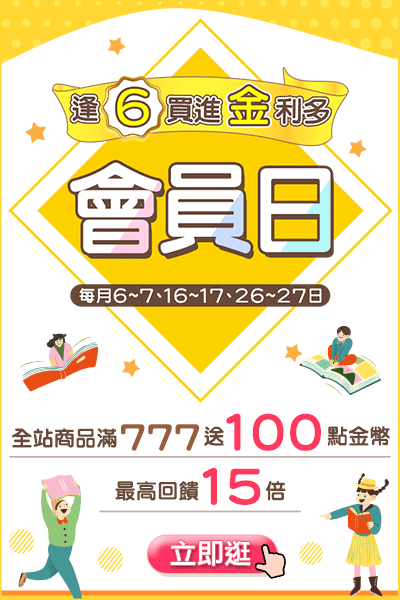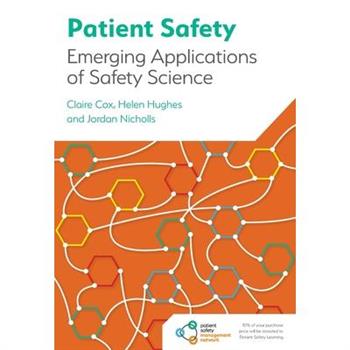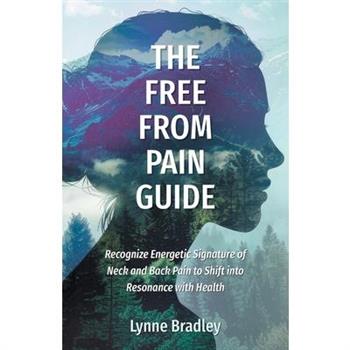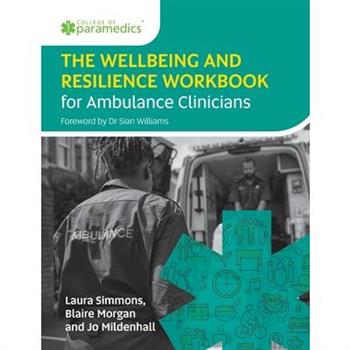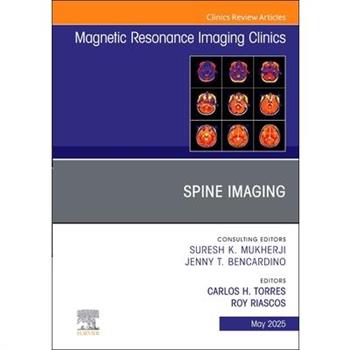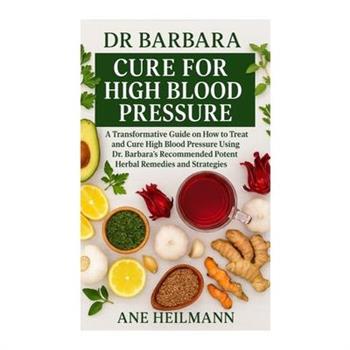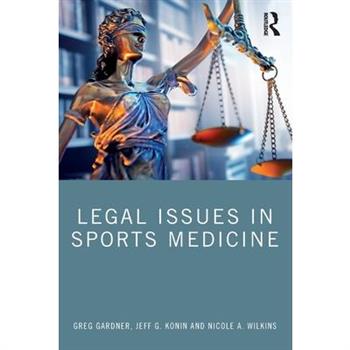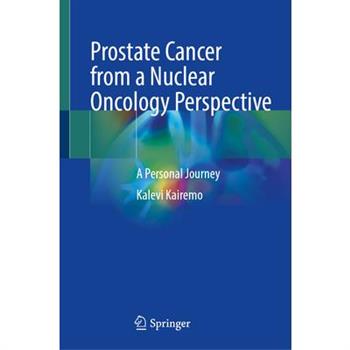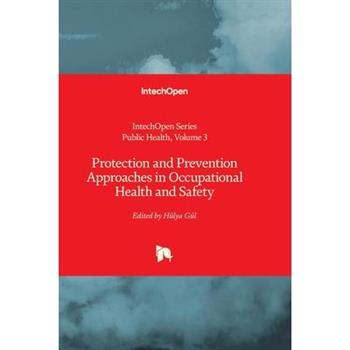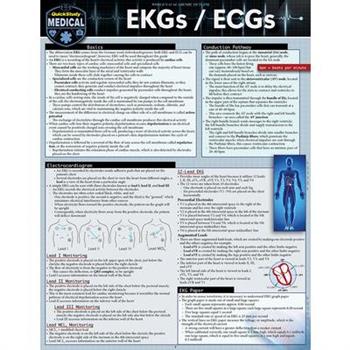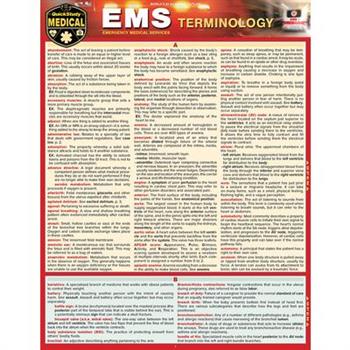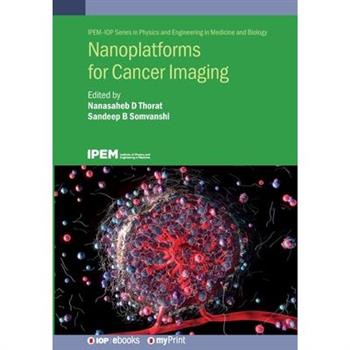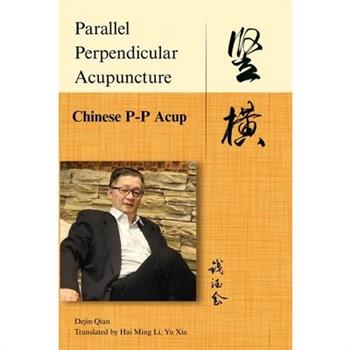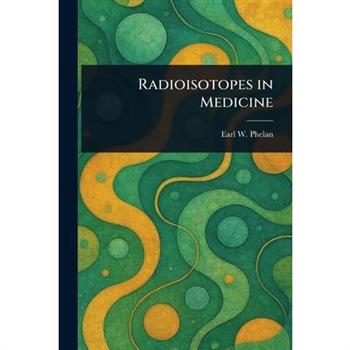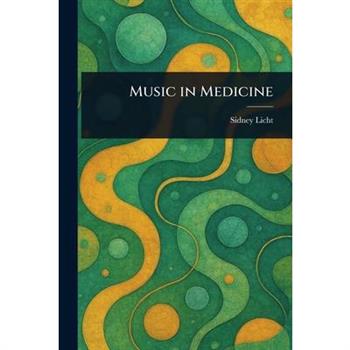The Free from Pain Guide
Are you trapped in an endless cycle of neck and back pain caused by long work hours, digital devices, or repetitive movements? The Free from Pain Guide offers a simple, practical path out of that discomfort-no needles required. Grounded in Traditional Chinese Medicine, this unique adaptation of the renowned Balance Method shows you how to use an electronic acupuncture pen to pinpoint pain's "energetic counterpart" and restore harmony in just five logical steps. You'll discover how to instantly release tension, enhance mobility, and tap into your body's innate healing power. Through clear illustrations and straightforward explanations, you'll quickly master a natural technique that can be applied anytime, anywhere. Are you ready to break free from chronic aches and reclaim your well-being? Unlock the secret to radiant health and find your balance-one painless step at a time.
The Free from Pain Guide
Are you trapped in an endless cycle of neck and back pain caused by long work hours, digital devices, or repetitive movements? The Free from Pain Guide offers a simple, practical path out of that discomfort-no needles required. Grounded in Traditional Chinese Medicine, this unique adaptation of the renowned Balance Method shows you how to use an electronic acupuncture pen to pinpoint pain's "energetic counterpart" and restore harmony in just five logical steps. You'll discover how to instantly release tension, enhance mobility, and tap into your body's innate healing power. Through clear illustrations and straightforward explanations, you'll quickly master a natural technique that can be applied anytime, anywhere. Are you ready to break free from chronic aches and reclaim your well-being? Unlock the secret to radiant health and find your balance-one painless step at a time.
Essential Knowledge and Skills for Healthcare Assistants
This revised edition of Essential Knowledge and Skills for Healthcare Assistants is an accessible and comprehensive text designed to equip you with the necessary skills for your practice. This is an essential guide for all those training as healthcare assistants, nursing associates and assistant practitioners.
Cardiology, an Issue of Physician Assistant Clinics
In this issue of Physician Assistant Clinics, guest editor Sondra DePalma brings her considerable expertise to the topic of Cardiology. Cardiology is the largest internal medicine subspecialty for PAs and this number is expected to increase in the next few years. In this issue, top PA experts provide updates in this critical area to educate PAs on various assessments and interventions for common cardiology concerns.Contains 15 relevant, practice-oriented topics including a primer on primary and secondary hypertension; health equity and social determinants of health; atrial arrhythmias: atrial fibrillation and flutter; common (and not so common) conditions in pediatric cardiology; chest pain evaluation; and moreProvides in-depth clinical reviews on cardiology, offering actionable insights for clinical practicePresents the latest information on this timely, focused topic under the leadership of experienced editors in the field. Authors synthesize and distill the latest research and practice guidelines to create clinically significant, topic-based reviews
Study Guide for Today’s Medical Assistant
Get the most out of your Today's Medical Assistant: Clinical and Administrative Procedures textbook with this practical study guide! With chapters corresponding to those in the textbook, this review provides the extra practice you need to master the clinical and administrative procedures performed by medical assistants. Each chapter includes a wide range of exercises, performance checklists, and a guide to the amount of practice you need to attain competency. Written by the textbook's author, this review tool provides everything you need to master all of today's important medical assisting skills!NEW! Content alignment to 2022 CAAHEP Medical Assisting educational competencies helps you review and perform today's tasks at a level of accuracy and speed required of the entry-level practitionerNEW review content includes exercises on telemedicine, vaccinations, COVID-19 protocols, Cologuard, eating disorders, managing reimbursements, and professionalismNEW coverage of gloving and masking procedures helps to protect against COVID-19 and other infectious diseasesVariety of practice exercises includes matching, true/false, key terms, word parts, short-answer questions, crossword puzzles, critical thinking exercises, and moreChapter pretests and posttests help you to measure your mastery of the contentLaboratory assignment sheets call out each chapter's procedures and include performance checklists to help organize your study timePractice for Competency sections include worksheets with a guide to performing each clinical skillCritical thinking activities help you develop the judgment needed for real-life medical office situationsPerforated pages allow on-the-go review and make it easy to submit assignments
Spine Imaging, an Issue of Magnetic Resonance Imaging Clinics of North America
In this issue of MRI Clinics, guest editors Drs. Carlos Torres and Roy Riascos bring their considerable expertise to the topic of Spine Imaging. Top experts in the field offer a comprehensive review of the use of spine imaging to detect major issues, with articles on anatomy and pathology of the cranio-cervical junction, artificial intelligence, degenerative disease, marrow imaging, and many more.Contains 12 relevant, practice-oriented topics including AI in spine imaging; MR imaging in cervical spine trauma; imaging approach to myelopathy; role of MR imaging in spine infection; and moreProvides in-depth clinical reviews on spine imaging, offering actionable insights for clinical practicePresents the latest information on this timely, focused topic under the leadership of experienced editors in the field. Authors synthesize and distill the latest research and practice guidelines to create clinically significant, topic-based reviews
Book Alone: Functional Anatomy 2e Component Only
Catalyst Learning Medical Language Stat!
Prosthetics and Orthotics for Physical Therapists
This book provides physical therapy students, physical therapists, and other allied health clinicians with foundational knowledge in prosthetic and orthotic (P&O) topics. It includes an overview of the history of amputation, and artificial limb, prosthetic, and orthotic concepts, and a review of professional and educational concepts.
Workbook and Licensure Exam Prep for Radiography Essentials for Limited Scope
Reinforce your understanding of Radiography Essentials for Limited Scope, Seventh Edition! With chapters corresponding to the chapters in the textbook, this practical workbook helps you review and apply the concepts and procedures required for limited radiography practice. Exercises include multiple-choice, fill-in-the-blank, and matching questions, as well as labeling exercises for anatomy diagrams and radiographic images. Mock exams help you practice for state licensure examinations. Written by the textbook's authors, this study tool prepares you for coursework and ARRT exams, and for practice as a Limited X-Ray Machine Operator. This is the only workbook of its kind on the market!NEW! Updated content in the workbook reflects current practice and corresponds to material in the textbookNEW! Expanded exercises in all chapters reinforce your understanding of the content, and include additional podiatry, chiropractic, and bone densitometry exercisesWide variety of exercises includes fill-in-the-blank, multiple choice, and matching questions, reinforcing your understanding of important topics including x-ray science and techniques, radiation safety, radiographic anatomy, pathology, patient care, ancillary clinical skills, and positioning of the upper and lower extremities, spine, chest, and headAnatomy and positioning labeling along with terminology exercises provide a thorough review of standard and accepted radiographic terminologyMore than 100 labeling exercises for anatomy diagrams and radiographic images help you learn anatomy and gain familiarity with how the body appears on radiographic imagesSection One offers learning activities and practice for all limited radiography topics and conceptsSection Two provides a preparation guide for the Limited Scope of Practice in Radiography Examination, along with expanded mock examsSection Three provides a preparation guide for the ARRT Bone Densitometry Equipment Operators Exam and includes study guidelines, ARRT content specifications, and a fully revised mock exam
Merrill's Atlas of Radiographic Positioning and Procedures - Volume 1
Learn and perfect your positioning skills with the leading radiography text and clinical reference! Merrill's Atlas of Radiographic Positioning and Procedures, Sixteenth Edition, describes how to position patients properly, set exposures, and produce the quality radiographs needed to make accurate diagnoses. Guidelines to both common and uncommon projections prepare you for every kind of patient encounter. The gold standard in imaging, Merrill's Atlas covers all procedures in the ASRT radiography curriculum and prepares you for the ARRT exam.NEW! Patient positioning photos enhance chapters on the chest, abdomen, pelvis and hip, and bony thoraxNEW! Axiolateral wrist projection and weight-bearing ankle positioning photos and images have been added to the upper and lower extremity chaptersUPDATED! Unit values expressed as SI units, with traditional units provided in parentheses, match the format used in imaging technical texts and the ARRT examUPDATED! Gonadal shielding guidelines align with current clinical practiceUPDATED! Collimation field sizes and image receptor sizes are simplified for enhanced clinical relevanceSTREAMLINED! Rounded decimal values replace fractions throughout the textComprehensive, full-color coverage of anatomy and positioning makes Merrill's Atlas the most in-depth text and reference available for radiography students and practitionersGuidelines to each projection include a photograph of a properly positioned patient and information on patient position, part position, respiration, central ray angulation, collimation, kVp values, structures shown, and evaluation criteriaDiagnostic-quality radiograph for each projection demonstrates the result the radiographer is trying to achieve
Merrill's Atlas of Radiographic Positioning and Procedures - Volume 2
Learn and perfect your positioning skills with the leading radiography text and clinical reference! Merrill's Atlas of Radiographic Positioning and Procedures, Sixteenth Edition, describes how to position patients properly, set exposures, and produce the quality radiographs needed to make accurate diagnoses. Guidelines to both common and uncommon projections prepare you for every kind of patient encounter. The gold standard in imaging, Merrill's Atlas covers all procedures in the ASRT radiography curriculum and prepares you for the ARRT exam.NEW! Respiration heading emphasizes the importance of proper breathing instructions for maximizing image qualityNEW and UPDATED! Additional images enhance coverage of mammographyUPDATED! Unit values expressed as SI units, with traditional units provided in parentheses, match the format used in imaging technical texts and the ARRT exam.UPDATED! Gonadal shielding guidelines align with current clinical practiceUPDATED! Collimation field sizes and image receptor sizes are simplified for enhanced clinical relevanceSTREAMLINED! Rounded decimal values replace fractions throughout the textComprehensive, full-color coverage of anatomy and positioning makes Merrill's Atlas the most in-depth text and reference available for radiography students and practitionersGuidelines to each projection include a photograph of a properly positioned patient and information on patient position, part position, respiration, central ray angulation, collimation, kVp values, structures shown, and evaluation criteriaDiagnostic-quality radiograph for each projection demonstrates the result the radiographer is trying to achieve
Merrill's Atlas of Radiographic Positioning and Procedures - Volume 3
Learn and perfect your positioning skills with the leading radiography text and clinical reference! Merrill's Atlas of Radiographic Positioning and Procedures, Sixteenth Edition, describes how to position patients properly, set exposures, and produce the quality radiographs needed to make accurate diagnoses. Guidelines to both common and uncommon projections prepare you for every kind of patient encounter. The gold standard in imaging, Merrill's Atlas covers all procedures in the ASRT radiography curriculum and prepares you for the ARRT exam.NEW and UPDATED! Additional figures and content in special imaging modality chapters represent current practice, protocols, safety measures, and technology in pediatric imaging, computed tomography, magnetic resonance imaging, diagnostic medical sonography, mammography, molecular imaging, nuclear medicine, and radiation oncologyUPDATED! Unit values expressed as SI units, with traditional units provided in parentheses, match the format used in imaging technical texts and the ARRT exam.UPDATED! Gonadal shielding guidelines align with current clinical practiceUPDATED! Collimation field sizes and image receptor sizes are simplified for enhanced clinical relevanceSTREAMLINED! Rounded decimal values replace fractions throughout the textComprehensive, full-color coverage of anatomy and positioning makes Merrill's Atlas the most in-depth text and reference available for radiography students and practitionersGuidelines to each projection include a photograph of a properly positioned patient and information on patient position, part position, respiration, central ray angulation, collimation, kVp values, structures shown, and evaluation criteriaDiagnostic-quality radiograph for each projection demonstrates the result the radiographer is trying to achieve
Spinal Manipulations and Mobilization Techniques
An essential reference for both learning and refining manual therapy techniques for the spine. A must-have guide for manual therapists, Spinal Manipulations and Mobilization Techniques is a comprehensive resource packed with step-by-step instructions, expert insights, and access to more than 55 video demonstrations to ensure precision and confidence in execution. Learn to safely apply grade 1 to 4 mobilizations and select grade 5 manipulations with the help of experienced osteopath John Gibbons. These techniques can be used by a variety of practitioners, including osteopaths, chiropractors, and physical therapists. In part I you will learn the anatomy, biomechanics, and related pathologies of the vertebral column; the differences between spinal mobilization and manipulation; and the gait cycle and its relationship to the vertebral column. In part II you will learn techniques for the cervical spine, atlanto-occipital joint, cervicothoracic junction, thoracic spine, ribcage, lumbar spine, and pelvic girdle. Manual therapy techniques for the spine, thorax, and pelvis are commonly performed for the treatment of pain and dysfunctional movement patterns. Using this book's detailed illustrations and photographs, along with online video demonstrations, you can confidently study and safely implement these techniques with your patients. Spinal Manipulations and Mobilization Techniques is the resource you need to learn manual therapy techniques.
Bitch I Lived
At just 23, Ashley Main faced the fight of her life-a double-lung transplant due to cystic fibrosis, a disease that had long controlled her breath, her body, and her future. In B!TCH, I LIVED, Ashley opens her heart and shares her raw, unfiltered memoir about what it's like to battle a life-threatening illness, and the immense strength it takes to accept the need for a transplant that would reshape her world. With her health rapidly declining, Ashley navigated the grueling process of finding a donor, undergoing the surgery, and learning to breathe again. But it wasn't just a battle with her body-it was also a journey through love, loss, and resilience. Supported by her husband, who stood by her side through every twist and turn, and her family, who provided the unwavering foundation she needed, Ashley recounts the delicate balance between dependence and independence, vulnerability and strength. From the fear of waiting on the transplant list to the joy of a new chance at life, Bitch I Lived is a testament to the power of hope, the love of a family, and the sheer will to survive. With courage and grace, Ashley Main reflects on what it truly means to be alive and how the people we love are the ones who breathe life into us, even in our darkest moments.
Dr Barbara Cure for High Blood Pressure
Dr Barbara's Cure for High Blood Pressure is a life-changing guide that unveils a natural, holistic, and deeply practical approach to reversing high blood pressure-without dependency on endless medications. Written with warmth, wisdom, and scientific clarity, this book walks you through the root causes of hypertension and reveals the power of food, herbs, movement, and emotional healing in restoring heart health. Dr Barbara draws on years of research and personal experiences to provide a complete healing system tailored to everyday people-whether you're newly diagnosed or have struggled with high blood pressure for years. Inside, you'll discover: What hypertension really is-and why it's called "the silent killer" How to detox and nourish your body using simple kitchen ingredients Proven herbal remedies like garlic, hibiscus, and bitter leaf for natural healing The critical role of stress and how to calm your nervous system Easy exercise plans for every age and fitness level This is more than a book-it's a blueprint for total body healing, rooted in natural wisdom, cultural knowledge, and spiritual encouragement. With step-by-step action plans and daily routines, Dr Barbara's Cure for Hypertension will empower you to reclaim your health, renew your energy, and live free from the fear of high blood pressure. If you're ready to stop managing symptoms and start healing the root, this book is your guide.
Legal Issues in Sports Medicine
Legal Issues in Sports Medicine provides an overview of legal issues and concepts for those entering or practicing in a sports medicine setting. The text addresses topics including risk management, assumption of risk, discrimination, and what to expect in the event of a lawsuit.
Prostate Cancer from a Nuclear Oncology Perspective
Provisional text This book provides a comprehensive review of innovative diagnostic methods for prostate cancer, with a particular emphasis on the development of PET radiopharmaceuticals. The author has had the privilege to introduce several tracers into clinical routine practice, including Na18F, 18F-FCH, 18F-FACBC, 68Ga-PSMA11, 18F-PSMA-1007, and 18F-DCFPyL. Thus, indications in various prostate cancer subgroups are discussed in detail, weighing the pros and cons in clinical practice. In the authors織 practice radiation therapy has been more important and surgical applications; therefore, PET based dose planning is presented in detail. Furthermore, the author has closely followed the development of radiopharmaceutical treatments, particularly in the context of bone pain palliation using radiopharmaceuticals, such as 89SrCl2, 186ReHEDP, 153SmEDTMP, 117mSnDTPA, and 223RaCl2, and targeted treatments (177Lu-PSMSA-617, 177Lu-PSMA-I&T and 225Ac-PSMA). Thanks to his experience, the author facilitated the set-up of targeted treatments in various countries: Baltic and Nordic countries, elsewhere in Europe, North America (Canada), and Africa (e.g. Ghana). The author's involvement in promoting therapy tourism to Finland further highlights his breadth of knowledge and practical experience. This book offers valuable insights into the evolving landscape of diagnostic methods and radiopharmaceutical treatments for prostate cancer. With the author's extensive experience and contributions to the field, readers can gain a comprehensive understanding of these advancements and their implications in clinical practice.
Protection and Prevention Approaches in Occupational Health and Safety
Developments in working life have also brought about occupational health and safety (OHS) problems. While the development of technology and protective equipment has created a safer working environment over time, new risks that pose a danger have also emerged. OHS aims to prevent the deterioration of employees' health in all occupational groups, protect employees from the hazards and risks in the environment, and provide environments that will allow individuals to continue to work at the highest level physiologically and spiritually. To create an OHS culture, it is not enough to simply explain the importance of the subject to employees and society. In order to transform this awareness into behavior, more emphasis and importance should be given to resources that will ensure that employees act by OSH rules during all their activities. OHS is considered an important public health problem today, and the first thing that needs to be done to prevent occupational accidents and diseases is to maximize the current knowledge of all parties involved on this subject. Education in the context of occupational safety and health is designed to provide employees with knowledge and skills so that managers and employees in the business can recognize the risk factors that may cause work accidents, injuries and diseases and be prepared for the damages that may occur in their work environments. This book aims to contribute to the training of experts working on occupational health and safety, which is the intersection of many different disciplines, in light of up-to-date information on this subject. It also provides a resource that employees can always benefit from regarding workplace protection and prevention.
Wilderness Paramedic Revision Guide
Whether you're preparing for the IBSC WP-C exam, applying to search and rescue teams or advancing your skills in expedition or wilderness medicine, this is your essential guide to successPrepare with confidence for the Wilderness Paramedic (WP-C) exam with this comprehensive study guide designed for paramedics, PAs, nurses and physicians. Aligned to the official exam blueprint this book covers everything you need to succeed: Critical care in wilderness environmentsProlonged field careEnvironmental challenges (altitude, hypothermia, avalanche, caving, diving)Search & command theoryMedical emergenciesTechnical rescue (rope rescue, helicopter operations, and decision-making)Includes a full-length practice exam!
EKGs / Ecgs
Essential companion for anyone studying EKGs/ECGs or working in the medical field including EKG and ECG technicians, nurses, and emergency medical technicians. This guide features an introduction to EKGs and how they work and also includes detailed sections covering the main types of arrhythmias, such as sinus rhythms, atrial rhythms, junctional rhythms, ventricular rhythms, and heart blocks. Includes illustrations of the waves you need to know, along with the rate, rhythm, P wave, PR interval, and QRS complex, of each rhythm covered are also included to help with identification.6-page laminated guide includes: BasicsConduction PathwayElectrocardiogramEKG PaperPacemaker PacingKey TermsHeart BlocksVentricular RhythmsJunctional RhythmsAtrial RhythmsWaveformsAnalyzing EKG RhythmsSinus Rhythms
Emt- Emergency Medical Technician
Best-selling essential reference for EMT certification and continued use as a professional reference for years to come. Customers say with this reference you can pass the certification exam and customer reviews tell the story. Packed with valuable information on scene size-up and patient assessment, this guide is an essential study tool for EMTs in training and an excellent refresher for EMTs already in the field. This guide also features a large section on anatomy, physiology, and pathophysiology of all major body systems, along with common disorders and injury management. Helpful illustrations and tables are included for quick reference.This 6-page laminated guide covers the following topics and more: Patient AssessmentMedical & Legal IssuesCommunicationsDocumentationScene Size-Up & ManagementAnatomy, Physiology & PathophysiologyPediatric DifferencesGeriatric DifferencesPediatric Vital SignsPharmacologyToxicologyHazardous MaterialsEnvironmental EmergenciesAnatomical Medical Terminology
EMS Terminology
Essential quick reference to the terminology you need as a student or professional in the emergency medical services field. This is the most convenient and durable format available whether in school or on the job. In 6 laminated pages William (Bill) Dino, MS, NRP, former instructor for ACLS, PALS and CPR, professor of paramedicine and current owner of Red to Black editing has used his experience as an educator and author to provide a powerful tool to help those who have made it their mission in life to help others. The success of the QuickStudy EMT - Emergency Medical Technician guide and the rave reviews of how that guide helped so many inspired more guides that we can offer at the best price anywhere for this much information at your fingertips.6 page laminated guide includes: Essential terms with definitions from A to ZIllustrations and Diagrams
San Juan College Respiratory Care Bundle
Comprehensive Respiratory Therapy Exam Preparation Guide, Fourth Edition is the ultimate study guide for respiratory therapy students preparing to take the National Board for Respiratory Care (NBRC) Therapist Multiple-Choice (TMC) and Clinical Simulation Examination (CSE) exams. Thousands of people take the NBRC TMC and CSE each year, but only about half of those test-takers are awarded the credentials needed to become a Certified or Registered Respiratory Therapist. Newly updated to reflect the changes to the 2020 NBRC, the Guide and its accompanying web resources comprise all the content, strategies, and tools you'll need to succeed. A full arsenal of study tools are available within the Navigate 2 Premier Access. The TestPrep allows students to build their own practice exams by selecting from over 600 questions covering specific topic areas such as Patient Data Evaluation and Recommendations; Troubleshooting and Quality Control of Equipment; and Infection Control, and Initiation and Modification of Interventions. Detailed feedback and question rationales are provided to guide readers in their TMC and CSE exam preparation. Interactive Clinical Simulations provide an opportunity to practice the case management skills that are crucial to the CSE exam, using the topics most likely to appear on the test. And a complete eBook makes all of this material mobile, so you can study on the go. UPDATED content reflecting the current standard of care and the practices used in the 'NBRC Hospital' and the '2020 NBRC Detailed Content Outlines' for the TMC and CSE examsRobust online TestPrep platform with hundreds of practice questions Multiple CSE Simulations, including five that are NEW with the Fourth EditionChapter sequence matches the 2020 TMC exam matrix"What to Expect on This Category of the NBRC Exam" feature appears at the opening of each chapterExtensive test-taking tips and study strategies (c) 2021 556 pages
Clark, Karpel, Shelledy, Volsko Print Bundle
Respiratory Care Cardiopulmonary Anatomy and Physiology is a comprehensive, highly illustrated text with a strong emphasis on cardiovascular and pulmonary physiology, acid/basis balance, and blood gas interpretation. This text will expertly guide students through cardiopulmonary anatomy and physiology and serves as an ongoing reference throughout schooling and professional life. With brand new content covering genetics, the inflammatory cycle, and pulmonary remodeling this text provides students with the most current information on cardiopulmonary anatomy and physiology. Respiratory Care Cardiopulmonary Anatomy and Physiology was written with the understanding to prepare students for successful completion of the National Board for Respiratory Care Examination Matrix. 2020 NBRC TMC style review questions at the end of each chapter and available as a Test Bank for instructors to utilize Case Studies have been integrated within the chapters to facilitate the application of content and to foster critical thinking Anatomy & Physiology Review Module is an interactive study tool that allows you to explore the human body presented in anterior, posterior and lateral views. Throughout the text, key points are illustrated and important information is highlighted in Clinical Focus and Did You Know? boxes to ensure comprehension and to aid the study of critical materials (c) 2022 450 pages
Bills, Chang, Shelledy Print Bundle
An invaluable role of the Respiratory Therapist is to administer and educate patients on aerosolized and systemic medications used in the treatment of respiratory diseases and other therapies affecting the cardiopulmonary system. Principles of Pharmacology for Respiratory Care, Third Edition is an ideal resource for Respiratory Therapists to understand the role of cardiopulmonary-targeted medication therapies and the mechanism of action drugs used in the treatment of the conditions they are treating. Mode of action, clinical indications, dosages, hazards, and side effects of multiple classifications of drugs are extensively addressed. As such, this text also serves a comprehensive reference on drug therapies used in the treatment of respiratory diseases as well as other medical conditions. The layout of this text in organized into three distinct sections to facilitate the understanding of the material. The first section includes general pharmacologic principles required to understand the medication therapies, terminology and drug mechanisms that are discussed in later chapters. The second section concentrates on drug therapies specific in respiratory care, while also reviewing other agents of pulmonary importance that are either administered or recommended by Respiratory Therapists, including inhaled pulmonary vasodilators and medications used in smoking cessation therapy. The final section concludes with review of the general pharmacology of common drug classes and therapies used in common medical conditions, emphasizing any effects these drug classes may have on the pulmonary system. Case Studies are included to help the reader apply and test their knowledge in real world scenarios Need to Know boxes highlight important concepts for the reader to aid in comprehension Review and Post Test Questions in each chapter can be used for self-test or graded assessment Highly Illustrated with diagrams and photos to provide a visual for challenging concepts to further aid in comprehension and retention OER Weblinks to online videos to help illustrate various concepts Additional online Dosage Calculation Exercises accompany Chapter 4 A robust online Basic Math Overview module provides worksheets to help the reader with a safe and easy way to review the math concepts required to be successful (c) 2021 264 pages
